Etruscan/Roman Art History Midterm
1/72
There's no tags or description
Looks like no tags are added yet.
Name | Mastery | Learn | Test | Matching | Spaced |
|---|
No study sessions yet.
73 Terms
Give three Etruscan origins OF Roma art
City Planning - Sewage systems, Hydralic engineering (draining marshes and deliver water to cities), GRID SYSTEM —- CARDO and DECUMANUS (two roads, N/S to W/E that intersect in middle of rome)
Augury and Public Ritual - Haruspices (reading omens from sacrfices of animals) Romans made a college for Etrsucan Haruspicy experts,
Temple Architecture- ex> Romans copied their high podium base, a deep front porch, and one single entrance, Tuscan columns were prefered for military buildings (boring plain top of column, not decorated),
Roman Reception of Greek Art themes
importance of military victory/triumph - greeks focused on mere representations of voctiry thriugh the use of Nike and thanking the gods with art. Rome took it a step forward with copying their arts (tropaem) and making them permanent to show power rather than a thank you message, they used their rulers as a sign of divine favor while greeks used Nike. Greeks rarely showed. anarrative of their victory just the gods alluding to a victory, while Romans made sure the political leaders and rome was clear narrative of victory.
Competition during Republic - elite competeted with wealth and seeing how fast and good they can emmulate greek art into roman ideals. This was important as it showed that roman conquered areas of greece. The purpose was to show their authority in “owning” greek art but also making it Better.
Eclecticism- Romans using their practices and influences from many cultures
deliberate Classicism and Archaism under Augustus - Augustus depicted himself as idealized, monumental building projects, Augustus wanted to go back to Roman ideals after civil war ruined it. Archaism: means to evoke a feeling of tradition/moralpiety thru use of old fashioned style/langueg. done thru revival of temple building, association with apollo.
question of “pleb”/”provincial” style as anti-classicaln - non-elite because it promotes art for own use like tombstones and gardens, it would be narratives fo rsmall audiences (like the life of a dead person), symbolism was boring, it communicated messages thru straightforward pictures rather than huge allusions. DIFFERENCE: communicates to a general audience rather than elevating an elite, imp cuz shows roman art was diverse.
5 Portraiture Themes
Hellenistic verses Roman Republican portraiture - H: focused on realistic port. that caprtures emotional state, focused on poets, philosophers, variety. Rome: verism that focuses on age, wisodm, and character. focused on elite
Verism - Hyper real that focuses on showing age and wisdom, exaggerated imperfections, used to show social standing and for the elits,
Social classes - Elite Patrician families kept makss of their ancestors to show heritage, verism: for wealthy, Verism was helpful for military men to shiw their power.None elite: Freedmen sometimes commissioned portraits to show their free, women had a more idealized look and hairstyles ususally showed wealth. non elites were more likely to show their portraits for funeral
portraiture of Augustus and Family- Barefoot meaning, he is fully dressed, rulers are now built with allusions to gods. political propoganda, showed dynastic succession and imperial power, stability, all of the family members had similar hair cuts to show unison/resemblance, characteristic hairstyle, idealized body types, look heroic body types, shows a positive message that the empire is in capable hands. This helped create an acceptance of a hereditary dynasty ina. society that was a republic.
later Julio-Claudian and Flavian portraiture- J; now emperors were frequently depicted with association of gods, Dynastic Resemblance (they all needed to look like Augustus), Idealization kept growing, Moral Virtues for women (they never aged and always associated with venus and Ceres), hairstyles to show eliteness stayed.
F: Return to Verism, flavians were more individualized rather than showing similarities in blood, showed personal characteristics, these portraits were commonly used to emphasize military strength. Females: corkscrew crazy hair, stressed roman virtues of modesty, chiaroscuro was a thing in portraits due to deep curls.
The Republican and early Imperial House 3 Themes
aka the plan, - atrium for central hall that was a waiting area where the head of the household received clients, Tablinum: owners office was next to atrium to show off importance, Cults: shrine to household gods located in atrium, visual heirarchy (where the axial line of sight from the front door was all very controlled and offered glimpses of riches)
use of space,
Hellenistic adaptations - they blasted greek decorative elements, once roman expansion happened, a shift from pure civic virtue to otium happened. This shift caused from public wealth display to more private, atrium remained. Peristyle v important from hellenestic as it provided more seclusion in the gardens. Art, Mosaics, and Sculptures added to private spaces. This changed however, the shoft still remained in subtle politically charged manipulations.
3 Public Building Themes
Theatres - imperial glory as the theatre was decorated with gods and imperial family, enforced social heirarchy with strict segregation, cultural adaptations, used greek art forms but made em roman
Amphitheaters - imperial power with massive structures that made rome AND augustus grand, Romantization: they were used as a sign as they were built in conquered lands to spread roman culture, Technological Innovation: use subterranean chambers _ cool tech
Baths - public service and equality as they were accessible to all, offered civic unity, lavishly decorated and well engineered to be lit, luxury, social hub as they housed exercise yards, libraries, gardens, shops.
General: imperial power, social control, and creating shared civic experiences
2 Infrastructure themes
roads and highways - used for rapid depolyment of military, colonization, helped trade,
aqueducts - public baths, sanitation, hydraulic power supported agriculture,
military expansion, economic growth, and imperial control
2 types of imp arches
Triumphal arches - propganda, part of a larger public display of power with parades, enforced divine authority, legacy, and emperors deeds.
city gates - imperial grandeur, military defense/control, adaptations to conflict, sometimes they would be monumental and decorative in time sof peace and stronger for times at war.
celebration of military victory and imperial power,
10 important themes in architecture midterm
architectural orders, Tuscan, Doric, Ionic, Corinthian, composite
The Republican and early Imperial House
The Roman city plan
Public buildings
infrastructure - engineering to remain in control, such as roads for military, roads for quick communication of officials/tax collectors, grid layouts that improved paved streets and fire resistant materials, imperial propaganda thru big buildings, aka public favor for with public works.
Romano-Etruscan Temple- same in high podium, frontal emphasis. Roman improved: materials ( durable stone like travertine), got greek influences for diff column orders,
Forum - social place for functions for politics, religious ish, and social life. Holds basilicas (law courts, meeting place, market), temples, rostra ( platform for publci speaking), Curia (senate house) Triumphal arches (propoganda),
Basilica - interchangable public space for law courts, hearings, market place.
arches - weight distribution allowed them to span larger openings than a simple post and lintel sytem.
Concrete and vaulting imp cuz it allowed for giant open interior spaces without the nead for a forest of internal columns. Vaults distribute weight outwards.
6 Age of Augustus Themes
Pax Romana/Pax Augusta- Destroys his navy to show war is over, he becomes. asymbol of peace himself. He calls himself the Princeps
Domus Augustae - imp cuz house of Augustust and he kept a nice modest message while still showing divinity/power. location strategically chosen to connect augustus to the mythical origins of rome. divine destiny.
use of myth - he is linked to venus thru his ancestor Aeneas. commissioned The Aeneid that created an epic poem and give a myth to the founding of rome and its heroic ancestry.
use of style - stylized,
transformation of cityscape- he believes traditrional roman art shouldnt be inside garden homes, it should be public. His priority was repairing romes buildings.
expression of values
family - promoting marriage and childbrith, no prostituation, he established rules concerining who would marry who, aimed to preserve social order. Livia had a virtuous image, a symbol for all roman women. He used lineage propoganda to give importance to family.
tradition (mos maiorum) - he is now making legislature on daily life traditions, “the way of the ancestors”, unwritten, customary law and moral code for Romans, passed down thru generations and rooted in Roman tradition. He portryaed himself as teh restorer of these values so he can justify his ruling as a centrralized power.
Julio-Claudians and Flavian imp theme
traditions and divergences from Augustus
Julio: suffered to maintain the image Augustus created, they demolished the equal relationshio with the senate, they increasingly centralized authority, faile dto mainatin the image and instead became known as tyrannical and excessive display of power that pushed the elite away. Some emperors started excessively spending which ruined the treasury. Their power relied too much on teh Praetorian guard rather than the peoples favor.
Flavian: power came from militray might, not dynastic succession, legitimized rule. by emphasizing their military prowess and their administrative competence. launched widespread propoganda campaign. He recruited a lot of italian and privincial members, later alienated the senate, lots of taxes after Neros spending, commisioned colosseum and lots of big projects,
3 Funerary Art Themes
Republican - biographical narratives, mythological scenes, connecting them to heroic/ideal figures. life stories, social status by scale/detail, occupations!, Mystery cults showed romans had an interst in the promis eof the afterlife. nature motifs were included to show beautidul fertile afterlifw. Marriage and family depicted to show roman morals.
Augustus and family - functioned less as memorials and more of statements about the divine mandate of the imperial dynasty. Odten showed foreshadowing of Augustus being a deity after death, Mausoleum served as a tomb for all his family making a public statement of teh permanence of his rule. he will die here etc.
social classes
senatorial - they focused on distigushing status and express hopes for the afterlife, it focused on. showing public service, elite values, and mythic /heroic narratives. Public procession was imp as they would parade the lineage masks during funeral. Sarcaphoagi were placed in the mausoleam.,
freepeople - anxious to show that they are newly freed, tehyre funerary art often acted as a public declaration of their successfu; ride from slavery. Contrasted with elite as the elite wanted a more private understate funerary art. verism was popular with a blend of newer imperial hairstyle, married couple reliefs were imp to them as they now have the right to marry and start a family. They wanted tombstones of their children who were born free served to publicly affirm the familys freeborn lineage. Celebrated ocupation! They showcased imperial connections. They rejected classicism and monuments were highly personalized to their life.

Tomb of the Diver, (tempo del Crete necropolis), Paestum, 5th century
info:
This could be a symposium or a funeral thing, where he is watching his own funeral celebration, or this depicts the Etruscan version of the afterlife. Being with all the pleasures in life.
Color in skin shows if its a man, women, social scale. Women are lighter skin, men are darker, we think this i because greek men are outside and doing exercises and stuff, upper class women are more inside.
Playing a greek drinking game, where you fling your sediment towards a flimsy greek sculpture, akak greek beer pong. A symousium
Heroic nudity: the people with the least amount of clothes are most heroic. (person on left)
Frescos were mastered in the Italian peninsula

Sarcophagus with reclining couple (sarcophagus “degli sposi,” Banditaccia necropolis), Cerveteri,
6th century (painted terracotta)
info:
Greeks believed that women were way too visible and they wanted them to be secluded. Higher Women didnt socialize with men or outside. Lower class women were outside. There was not a good integration with women in the public
When they met the etrsucans they couldnt believe that Etruscans had dinner with their wives. So greeks demonized etruscan women as not having self worth.
So etruscan art always shows how there was a sense of family life and women had a role in the family.

Tumuli (in the Banditaccia necropolis),
Cerveteri, 7th
-2nd c BCE

Tomb of the Augur, (Monterozzi necropolis),
Tarquinia, c. 6th century
info:
Augur: reading the signs of birds, very important for the Etrsucans. The story of Remes and Ramukus and the hills, you cant do anything important without doing the augury in rome
The augur in here is the purple guy who is speaking. This is noted through similar iconography in roman paintings.
On the right side, Romans had a tradition of gladiators being slaves, so the Etruscans have a weird figure on the right

Model of a typical Etruscan temple of the 6th c. BCE as described by Vitruvius
Classic etruscan
Etruscans have three different rooms, instead of just one like the greeks

Aule Metele (“Arringatore”), Cortona,
c. 90-70 BCE Republican age
info:
Originally called the Arringatore
He is serious
Wearing an almost roman toga
Adress gesture of ta
Forum, Pompeii

Capitolium, Pompeii during earthquake
of 62 CE, relief from the lararium of the
House of L. Caecilius Iucundus, Pompeii,
c. 62-70 CE Republican age

Theater, begun 2nd c BCE, and amphitheater, c. 80-70 BCE,
Republican Age Pompeii
Brawl in the amphitheater, (from House I,3,23), Pompeii, c. 60-79 CE, (fresco) Republican Age
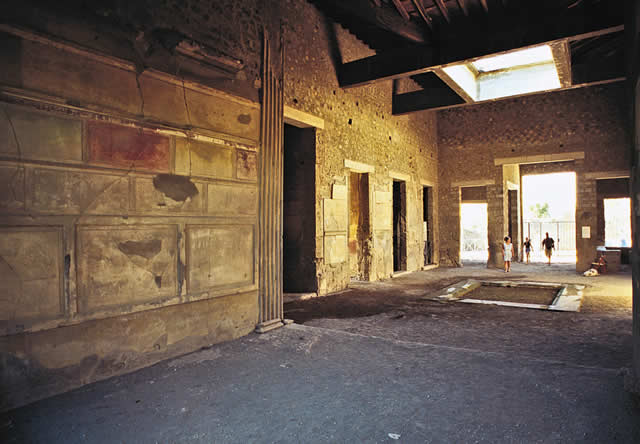
House of Sallust, Pompeii,
3rd c BCE Republican Age
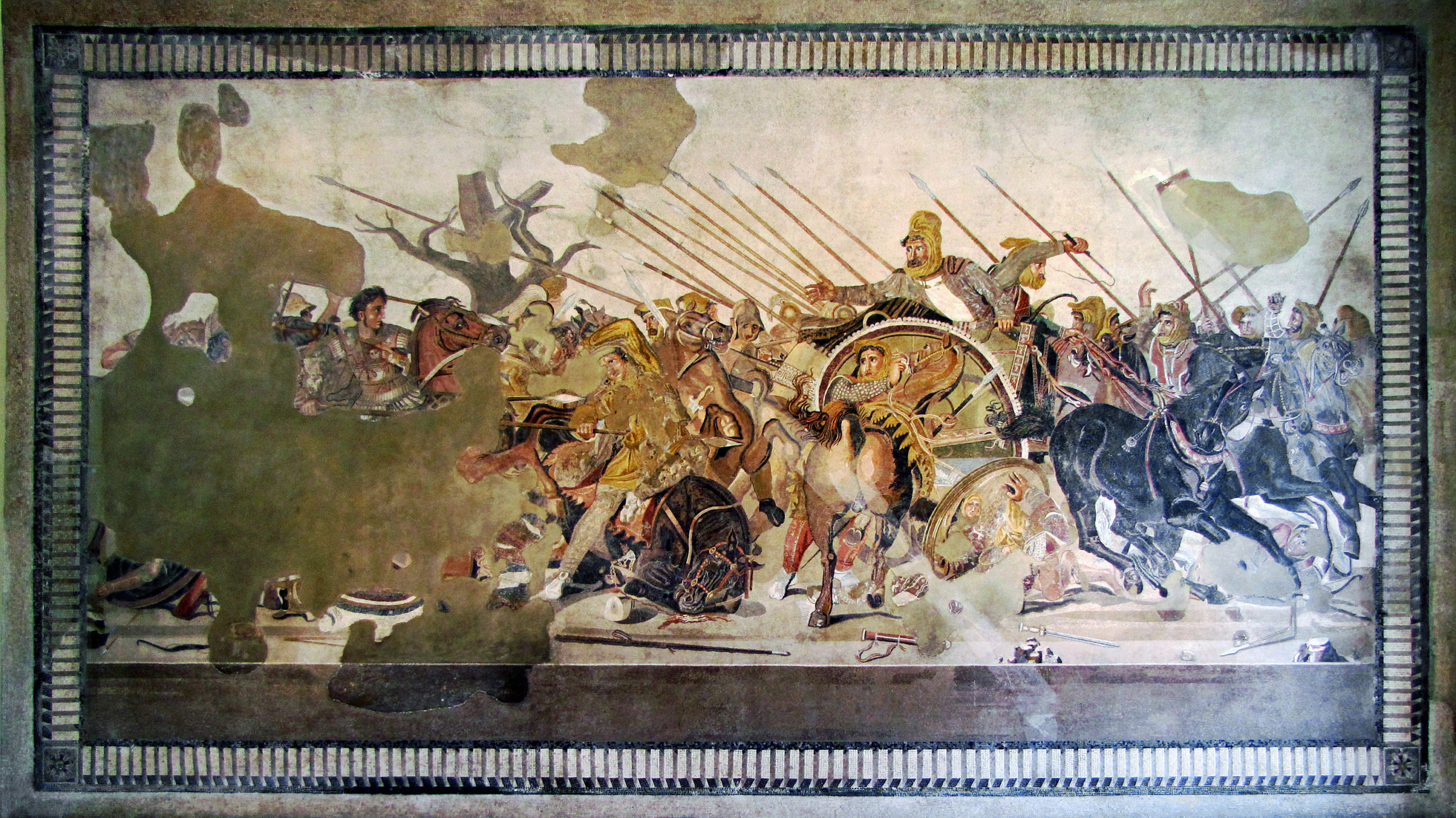
House of the Faun, Pompeii, early
2nd c BCE Republican
School of Pasiteles, “San Idelfonso
Group,” (from the Gardens of Sallust),
Rome, c. 50-25 BCE Republican
info: Mashup/remix of roman art
Found in a public garden in Rome
The beginnings of the wealthy dedicating things to the public good.
Roman remix of three diff famous greek sculptures
Praxiteles, Apollo Sauroktonos
Polykleitos, Head of Doryphoros (they get slimmer and longer as they go up in their proportions)
Polykleitos, Kyniskos

“Altar of Domitius Ahenobarbus,” Rome, late 2nd
-early 1st c BCE Republican

“Tivoli General,” From Temple of Hercules, Tivoli. Republican
c. 75-50 BCE.
info:
Found in hercules temple,
Romans didnt like nudity
Ee
Portrait of a Man, From near Otricoli. Ca. 50 BCE Republican
Portrait of Pompey the Great, From Rome. (Claudian Copy of a Portrait of) ca. 50 BCE. Republican

Coin of Mark Antony with head of Victory, minted at Lyons, 43-42 BCE Republican

Portrait of Gaius Julius Caesar, from Tusculum. ca. 44 BCE. Republican

Sestertius with Portrait of Julius Caesar as Divus Julius and Octavian as Divi Filius. 37 BCE. Republican
Portrait of Gaius Octavian, from Arles. 37 BCE. Republican
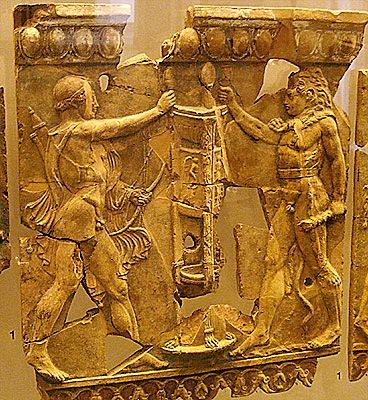
Temple of Apollo Palatinus,
terracotta plaque with
struggle of Apollo and Hercules
for the Delphic tripod,
dedicated 28 BCE, Rome,
Palatine Hill, Republic
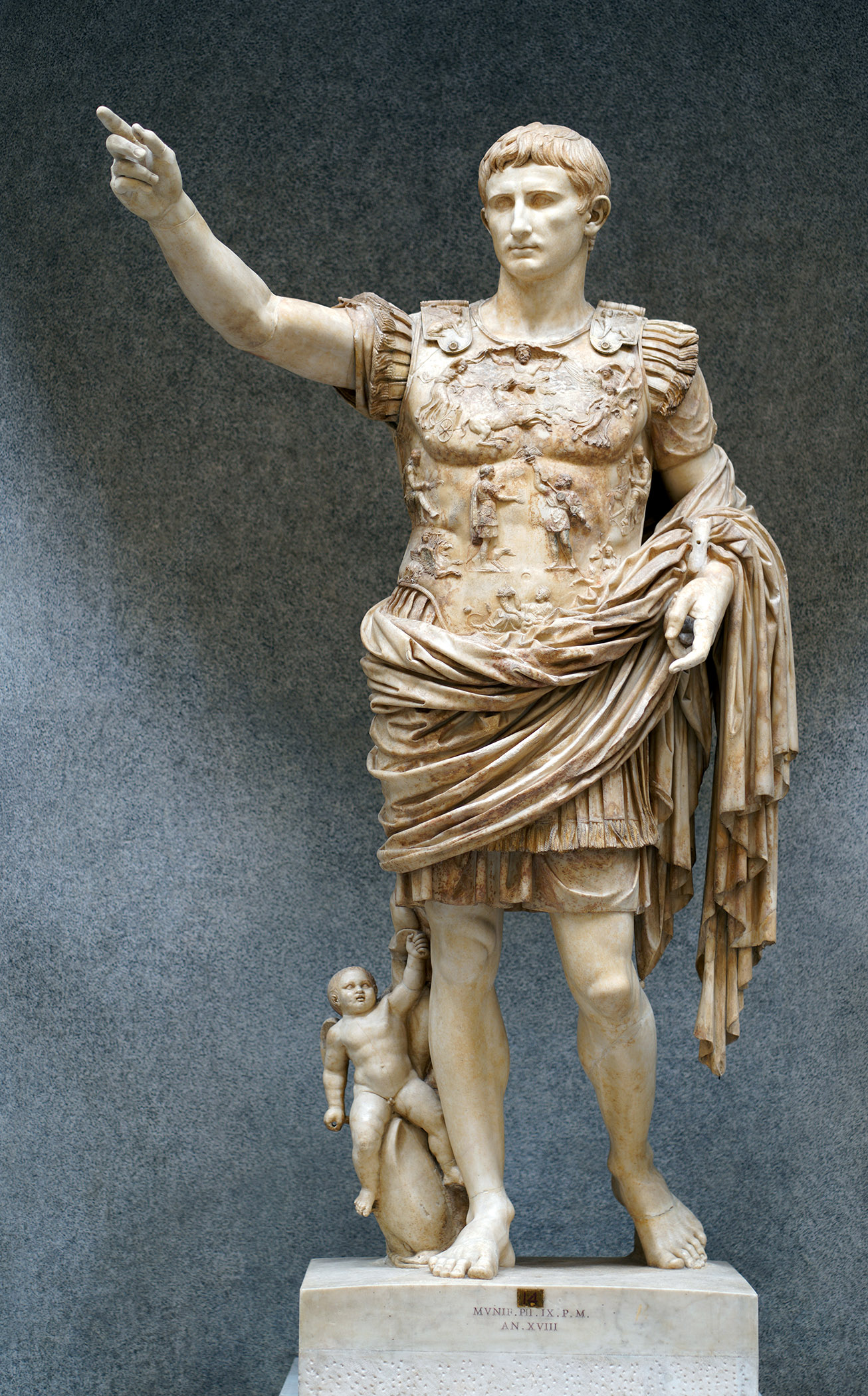
Statue of Augustus, from Primaporta,
20 BCE (Tiberian copy of c. 15 CE?), Roman Empire
Info:
New Era: Augustus is fully dressed except his feet, he is always youthful, and has a strut/support in the legs,
Barefeet Meaning: ti have bare feet is something that comes with depictions of Hellenistic royalty and gods. It is signaling that he is a “god”. This gies against what everyone believes about Augustus.
cupid, alludes to his heritage to..
Ara Pacis Augustae/Altar of Augustan Peace,
(July 4,) 13 BCE-(Jan. 30), 9 BCE,
Rome, Campus Martius Roman Empire
info:
Two female personifications of Giddess, Teles (Earth) and Roma.
Two founding brothers
Prescence of children
The children are not wearing a toga, one of augustuses grandsome sprobs, he is wearing a short tunic, and wearing a hate from the eastern world (turkey).
The other idea is that it is an actual Barbarian child. Cuz augustus made apax augustus about the other kingdowms. Rome had hostage children of the other kingdoms so the other kingdoms stay in line. Augustus treats them liek his grandkids and learn rome, gives them an education, and learn Roman ideals so they went back to the kingdoms to learn and be friends of Rome.
Augustus had no sons, only one daughter. This is cause the Romans were not successful at having children. We dont know if its cause of social causes or medical causes. This is cause they get their water from lead pipes. They had a special award for women who had three sons and lived into adulthood.
building for sacred public sacrifices, sacrfificial alter! shows golden age created by augustus
front panels say, this is where wecame from and the back panels say we didi t

Be able to identify Augustus, Agrippa, Livia and Tiberius. Note order of procession. Answer on googl doc
Augustus
idk
Agrippa - his right hand man
Livia (Right man is Tiberius?)
Antonia teh Younger etc
info:
lots of children, he wanted to convince the children of the future as the ones that keep the peace.
long ends of alrter show processional freizes
one side shows politicians and elite
other side shows imperial family,
dieties/royals/triumphs iconography shows Augustus being that sign of peace and a powerful patron and putting it on the field of mars, it creates a symbol that military power ensures imperial piece and creates endless prosperity.

Allegory of Peace from Ara Pacis Augustae
Augustae, (July 4), 13 BCE-(Jan. 30), 9 BCE, Rome, Campus Martius Roman Empire
Info:
Allegory of Peace Panel: alludes to Ramulus and Remes, has spirits of rivers or some

Forum Augustum/Forum of Augustus, dedicated
2 BCE, Rome, Roman Empire

Caryatids, Forum Augustum, dedicated 2 BCE, Rome Toman Empire

Caryatids, South Porch of the Erechtheon, Athens, Acropolis,
421-406 BCE Republic

Relief believed to represent cult statues of Mars, Venus, and Divus Julius as in the Temple of Mars
Ultor (Forum of Augustus, Rome), Algiers (Algeria), 1st c BCE-1st c CE Roman Empire

Reconstruction and remains of the statues of the Summi
Viri/Great Men, Forum Augustum, dedicated 2 BCE, Rome, Roman Empire

Relief of Aeneas fleeing Troy w/ Anchises and Ascanius,
(probably based on the statue group in the Forum
Augustum), Altar of the Gens Augusta, Carthage (Tunisia),
14 CE Roman Empire

Mausoleum of Augustus,
begun 28 BCE, Campus Martius,
Rome, Republic
info:
The obelisk is sun dial,
Theres two more obelisks that flank the entrance of the tomb.
Mausoleum: is a new word at this time, came from a ruler that had a tomb built for him, aka Mausilus. This becomes the word for a large over-the-top tomb. All mausoleums all agreed they were square with a statue on top.
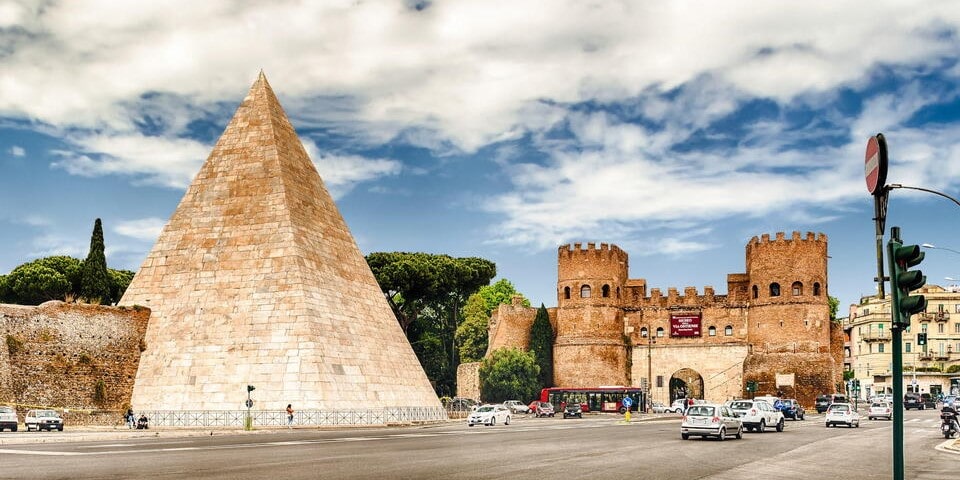
Tomb of C. Cestius, c. 15 BCE,
(Via Ostiensis), Rome, Roman Empire
info:
Pyramid cuz of Egypts.He is trying to perhaps honor romes victory, or perhaps is participating in the competition of tomb building. Augustus puts a stop to this tomb building after this one.
![Tomb of the Baker Marcus Vergilius Eurysaces, southern facade (ca. 50-20 BCE); at the Porta Maggiore, Rome, Italy [798x1024] : r/ArtefactPorn](https://external-preview.redd.it/m3UBetWynFz6nBmpfZYPklnnyQq33JlQFLfziTnuAvA.jpg?width=640&crop=smart&auto=webp&s=7018e865eaec46ac571fb2089312e6626919d9bc)
Tomb of M. Vergilius Eurysaces,
late 1st c BCE, (between Via Labicana
and Via Praenestina), Rome, Roman Empire
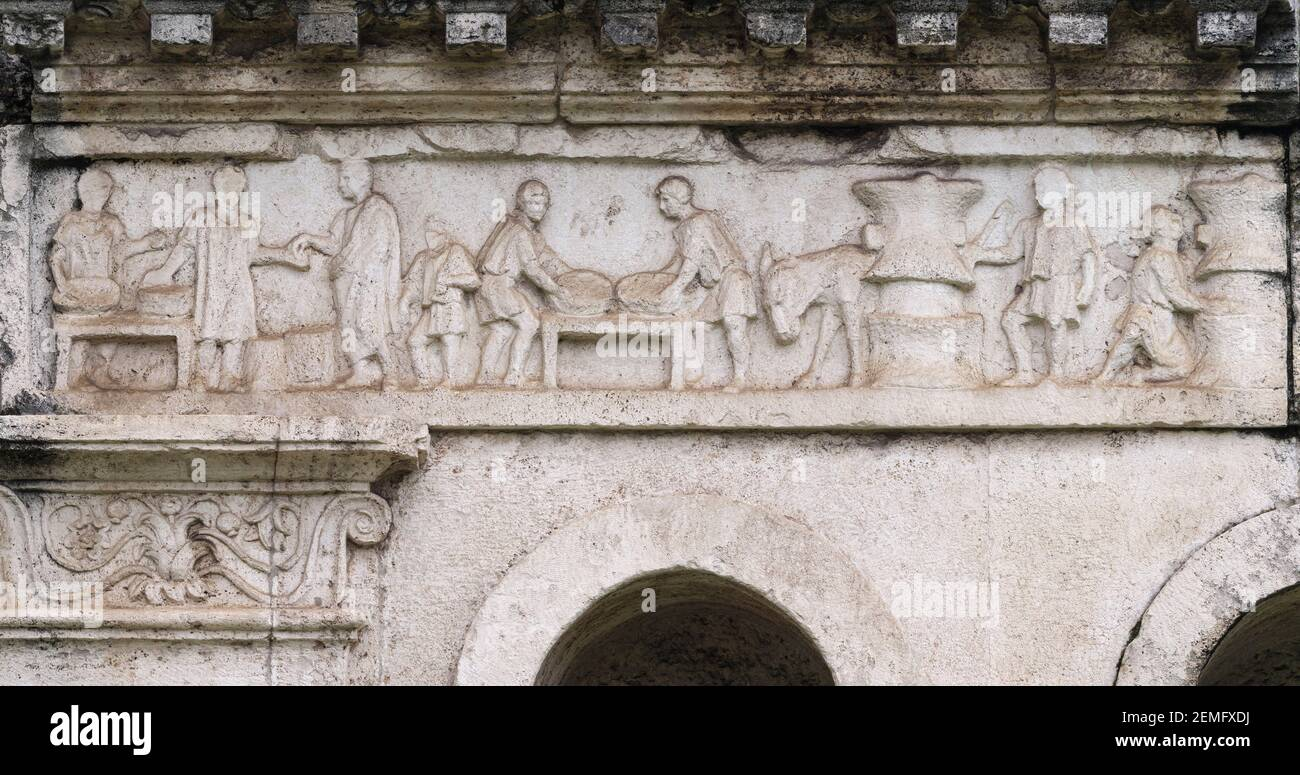
Frieze, Tomb of M. Vergilius Eurysaces, late 1st c BCE, Rome Roman Empire
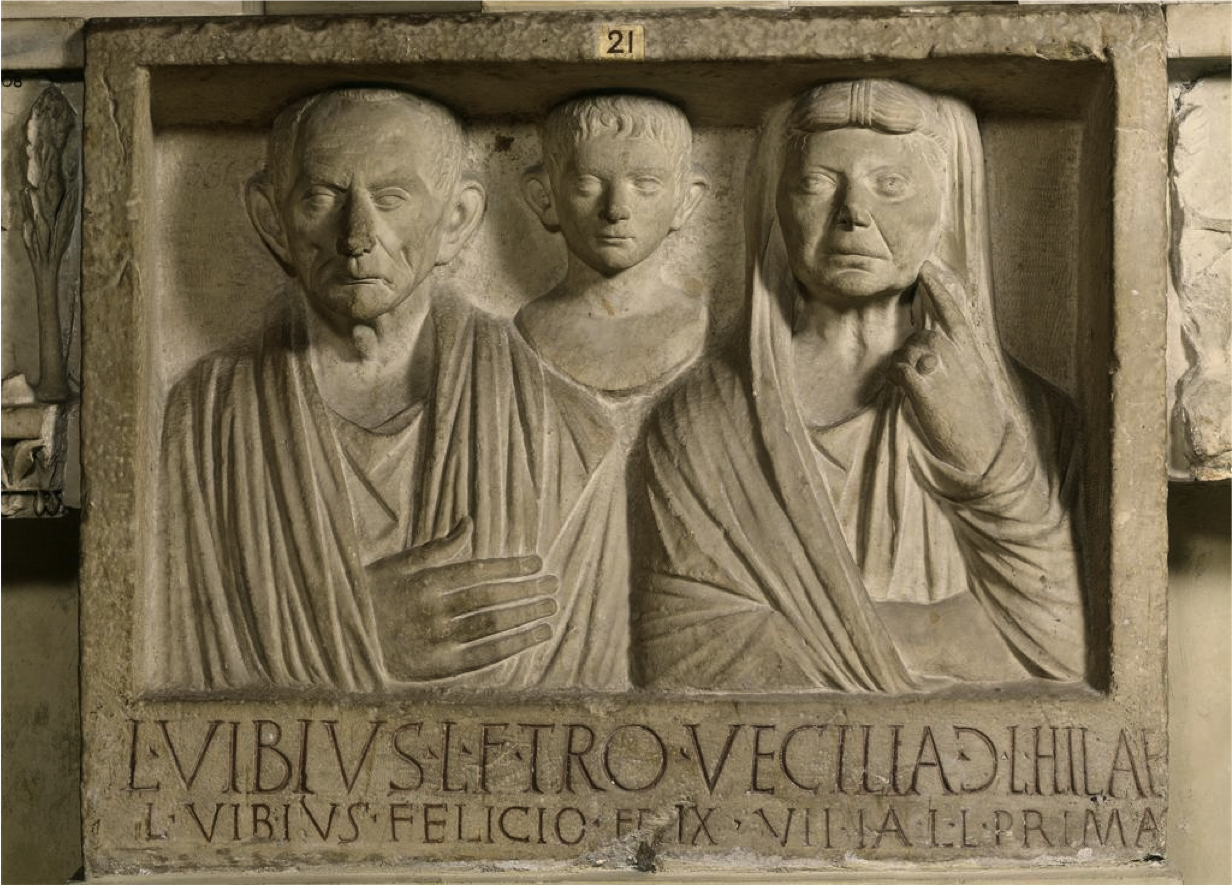
Funerary relief of Lucius Vibius and Vecilia Hila, 13 BCE – 5 CE, Rome, Roman Empire
Compare to portraits of Julius Caesar, Gaius Caesar, and Livia

Funerary Relief with (R) portraits of Q. Servilius (libertus of Quintus), Sempronia (liberta of
Caius), and (L) Publius Servilius, son of Quintus, late 1st c CE, Rome, Roman Empire
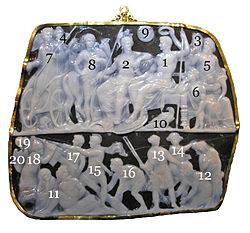
Gemma Augustea, c. 14-15 CE, Rome?, Roman Empire
1. Augustus 2. Roma 4. Victoria 5. Oceanus? Tiber? 6. Gaia? 7. Tiberius 8. Germanicus?
Roman soldiers erecting trophy (tropaion) with captive “barbarian” couples, below
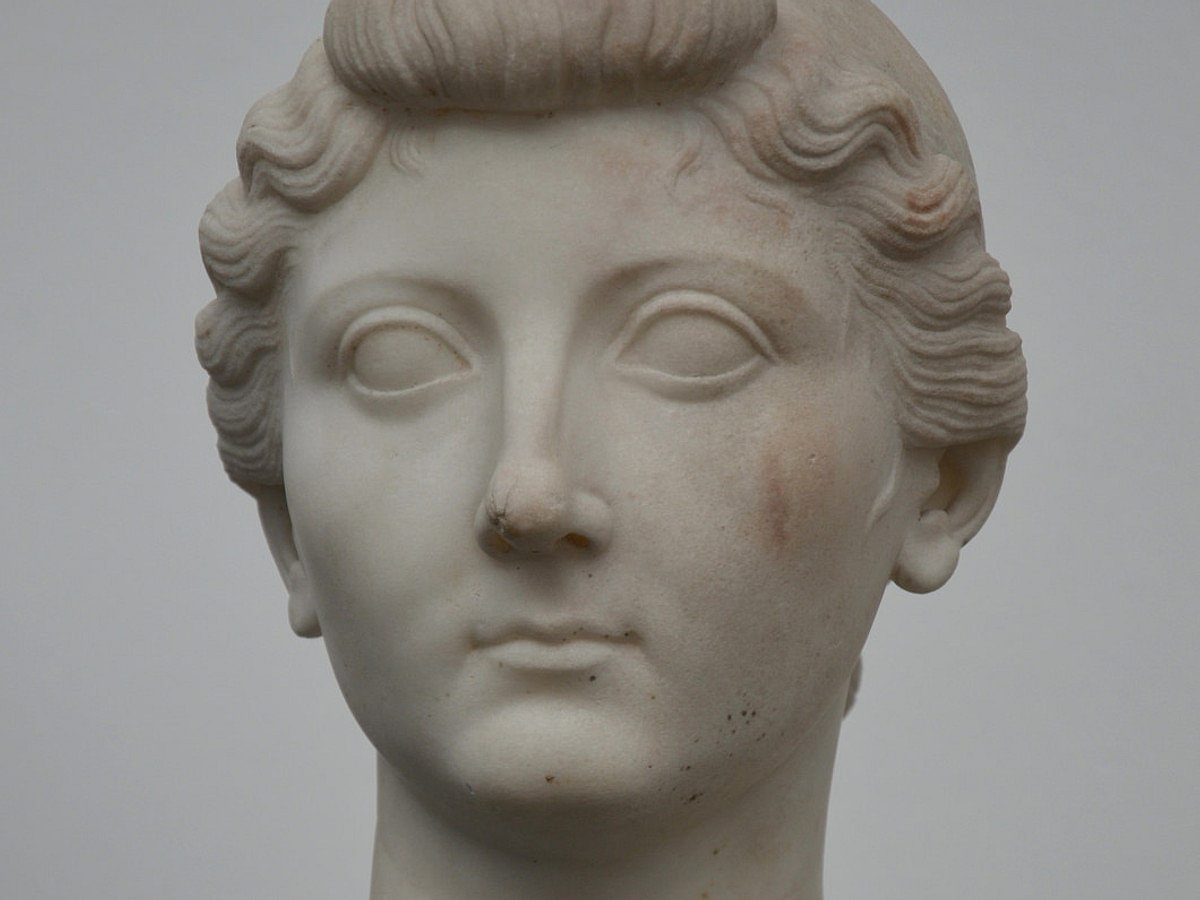
Heads of Livia, Augustus,andTiberius from Arsinoe, Egypt, early 1st c CE, Roman Empire
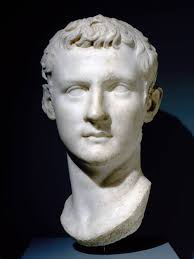
Head of Caligula, from Marino, 37-41 CE, Roman Empire
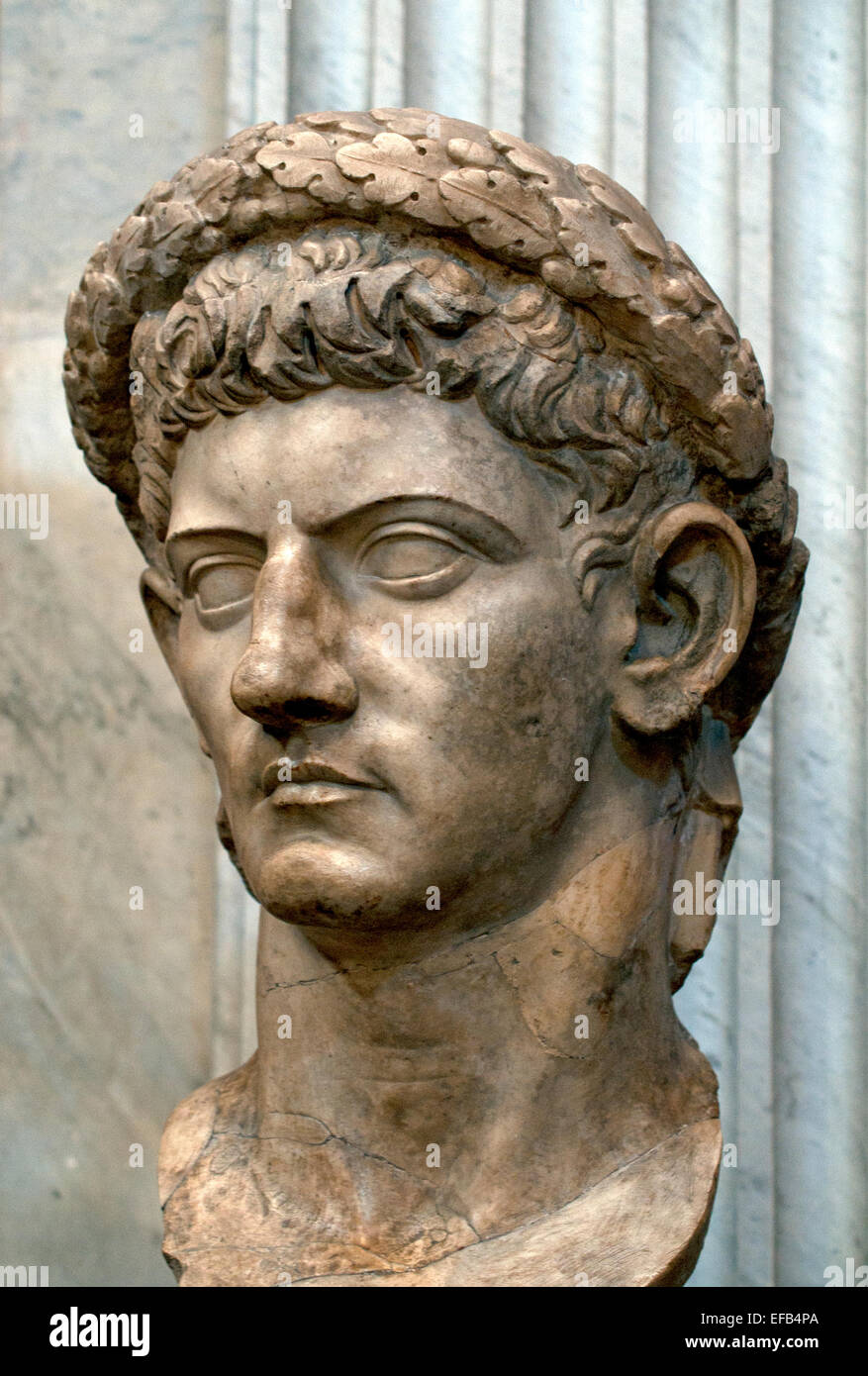
Caligula recut as Claudius?, 1st c CE Roman Empire

Bust of Claudius, 25-49 CE, Roman Empire, Rome?
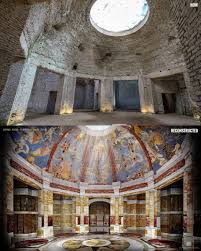
Severus and Celer, octagonal hall, Domus Aurea,
64-68 CE, Roman Empire
Rome

Painted vault, Domus Aurea, 64-68 CE, Roman Empire
Rome
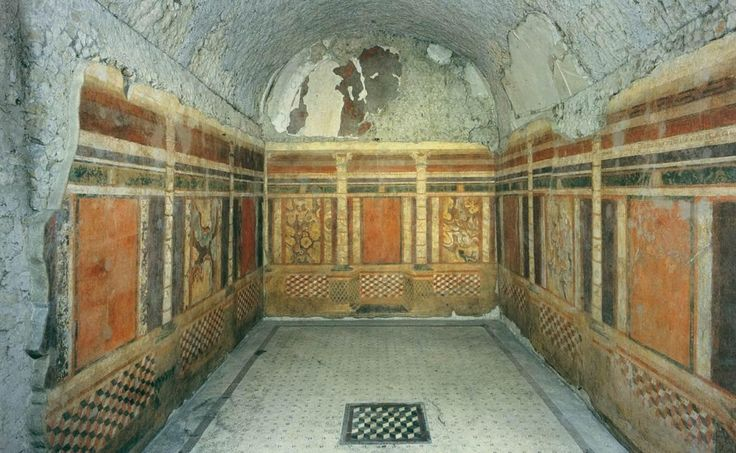
Second style mural painting, (Room 2), House of the Griffins, Palatine Hill, Rome, c.100-80 BCE, Roman Republic
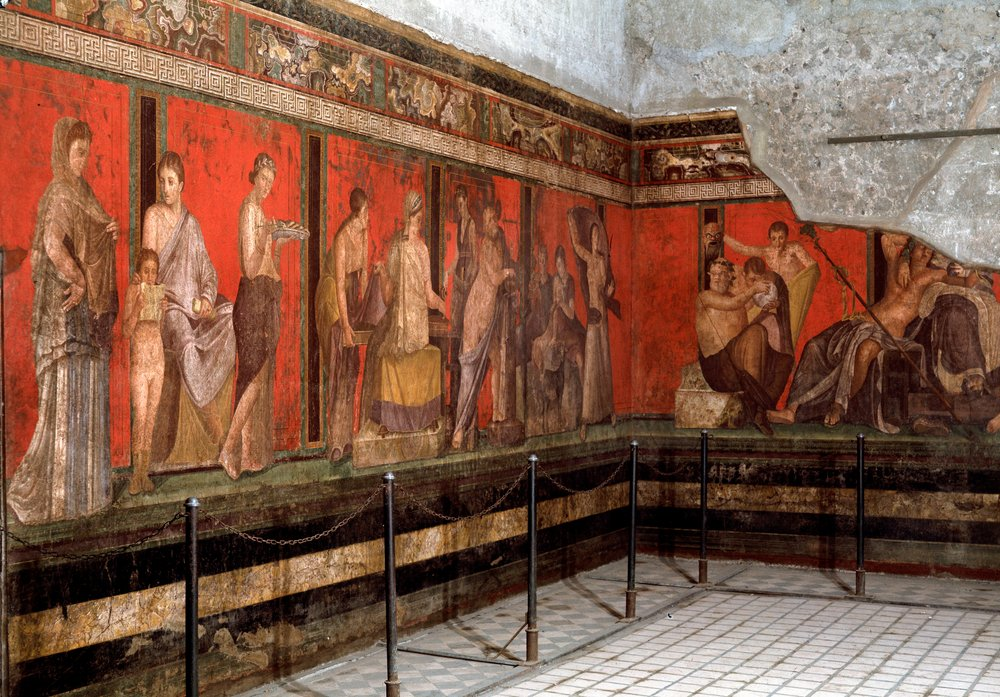
Dionysiac mystery rites, Villa of the Mysteries, Pompeii, c. 60-50 BCE, Republic

Odysseus in the Underworld, 2nd style, from a house on the Esquiline Hill, Rome, c. 50-40 BCE, Republic
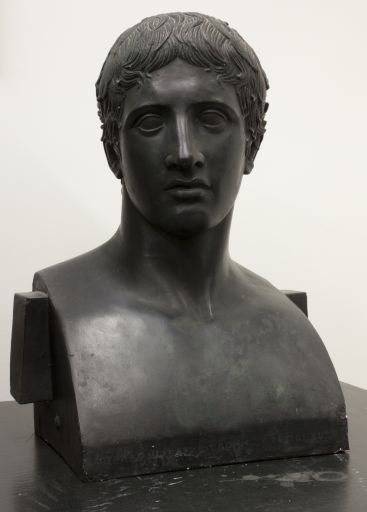
Apollonios of Athens, Republic, copy in the form
of a herm of the head of the Doryphoros by
Polykleitos (c. 450-440 BCE), from the Villa of
the Papyri, Heculaneum
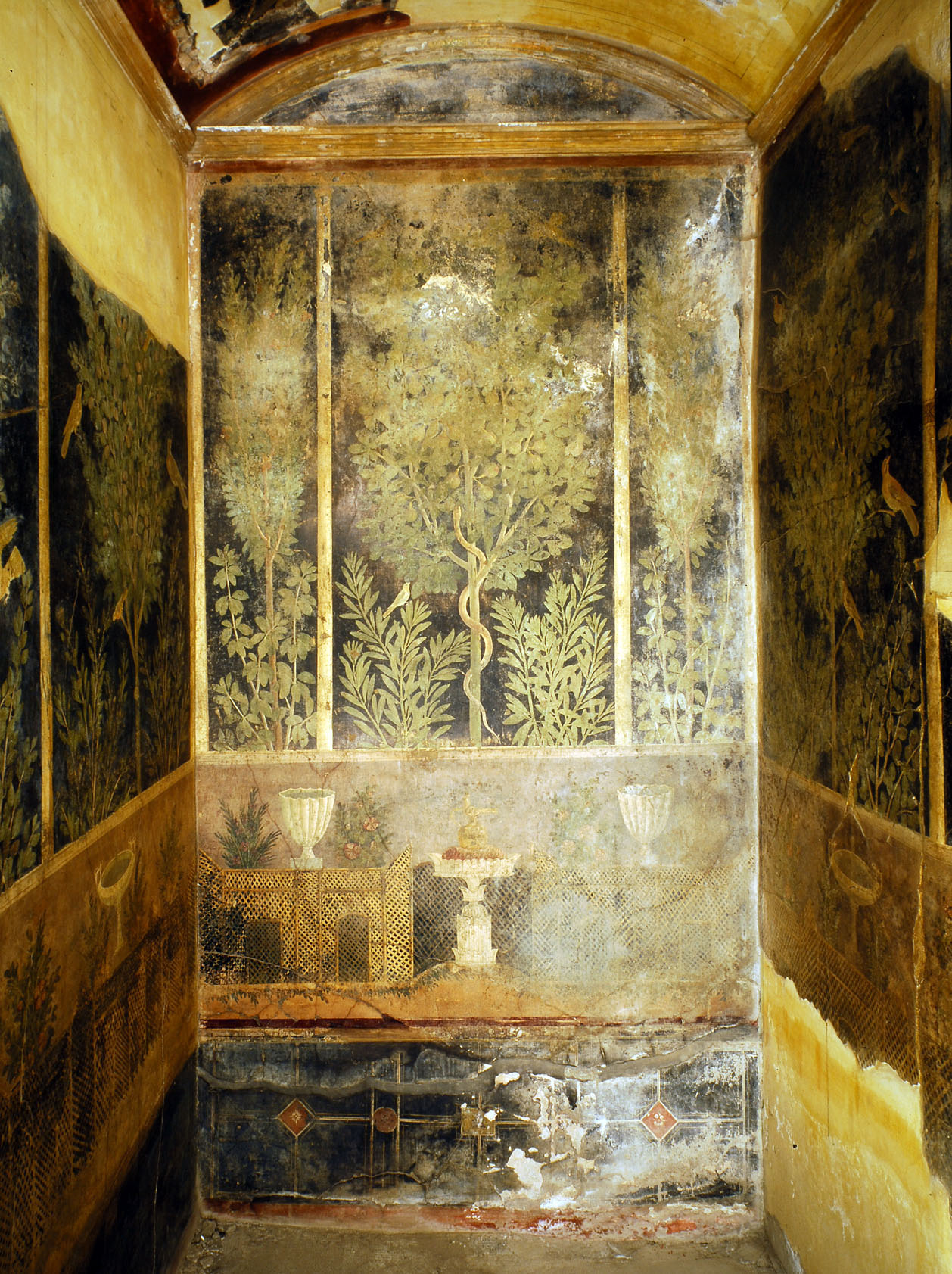
Gardenscape, 3rd style,
triclinium II, House of the Fruit
Orchard, Pompeii, c. 40-50 CE, Republic
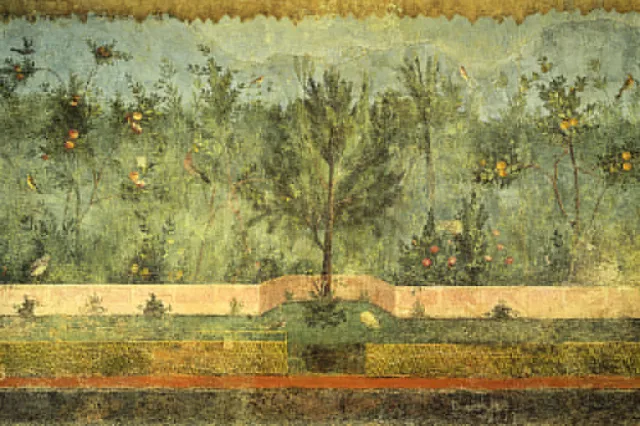
Gardenscape, 2nd style, Villa of Liva at the
Primaporta, c. 30-20 BCE, Roman Empire
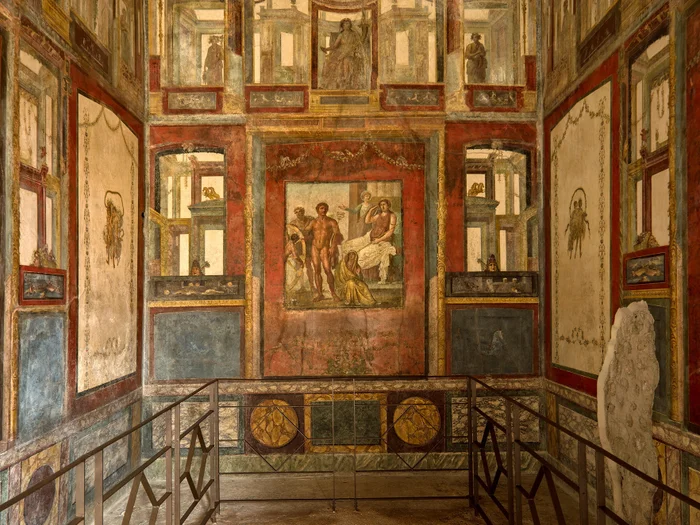
Fourth style mural painting,
Ixion Room, House of the Vetii,
Pompeii, c. 62-79 CE Roman Empire
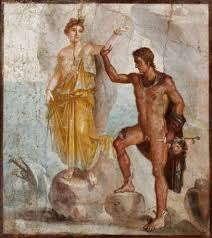
Perseus and Andromeda, House of
the Dioscuri, Pompeii, c. 62-79 CE, Roman Empire
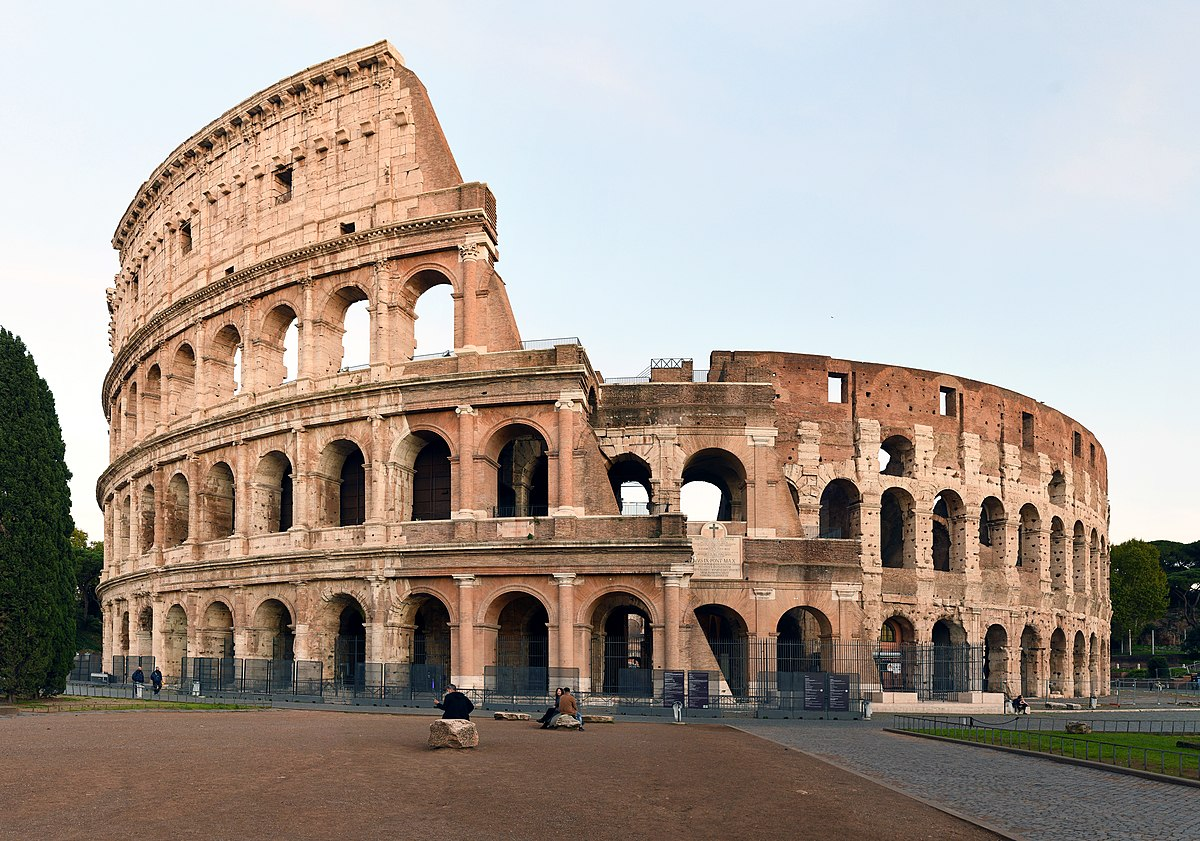
Colosseum (Flavian Amphitheater), Rome, c. 70-80 CE, Roman Empire

Cancelleria Reliefs:
Frieze A, Profectio
of Domitian in 92-
93 for Sarmation
War, Roman Wmpire
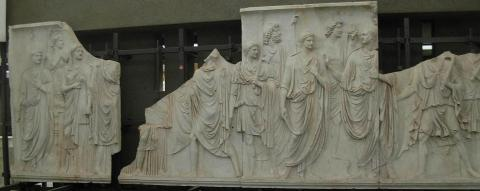
Cancelleria Reliefs:
Frieze B: Adventus
of Vespasian in 70
after the civil war ,
93-95 CE, Roman Empire

Togate statue of Titus, from Rome, c. 79-81 CE, Roman Empire
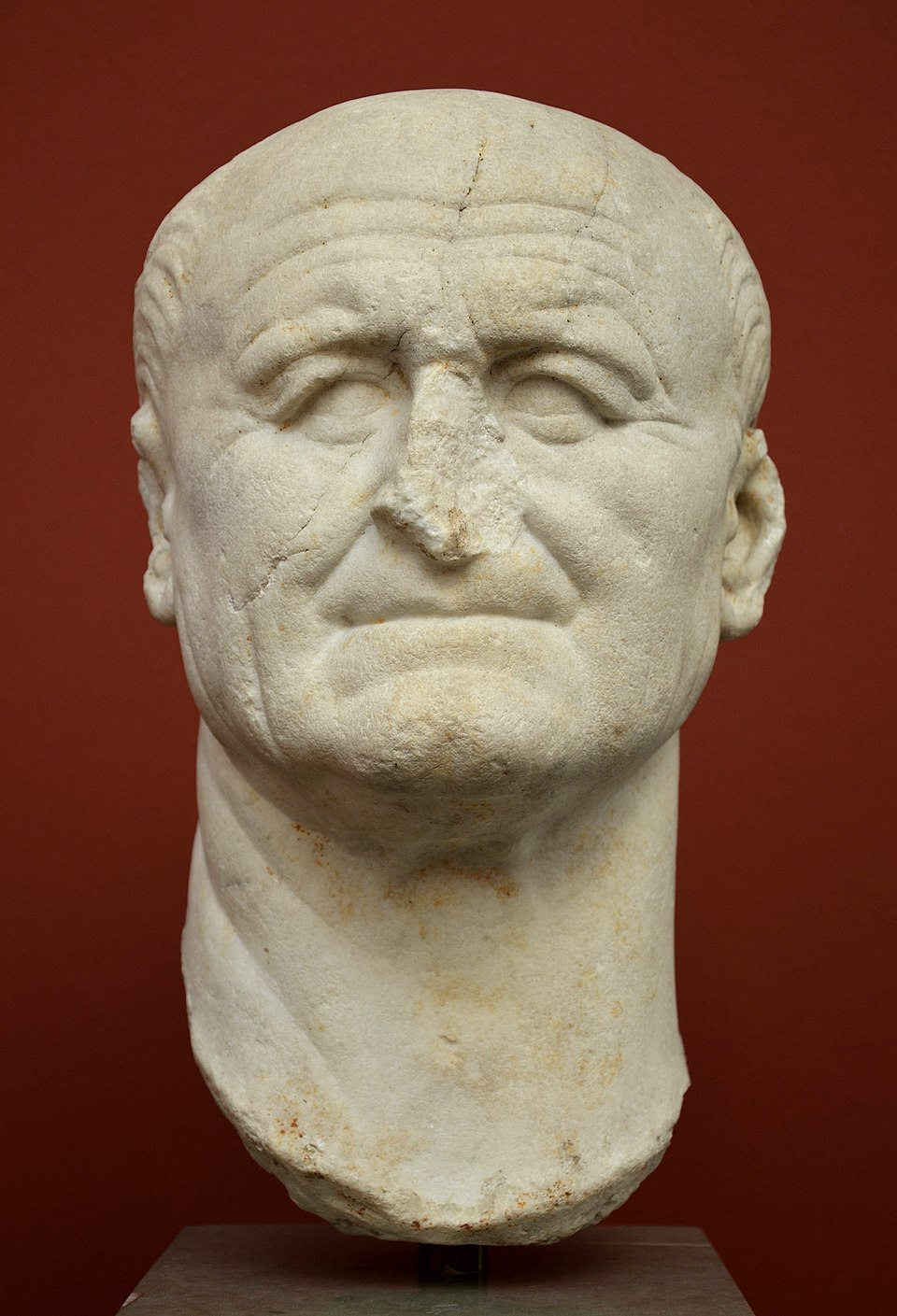
Head of Vespasian, 75-
79 CE Roman Wmpire, Italy?
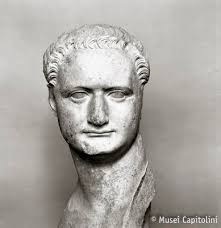
Bust of Domitian, from Rome, c. 88 CE Roman Empire

Aeneas Sacrificing, from Ara Pacis
Augustae, (July 4), 13 BCE-(Jan. 30), 9 BCE, Roman Wmpire, Rome, Campus Martius
info:
Aeneas Sacrificing: he sacrifices the cow? Or some and if the blood is red or some then he has arrived to where he need sto be
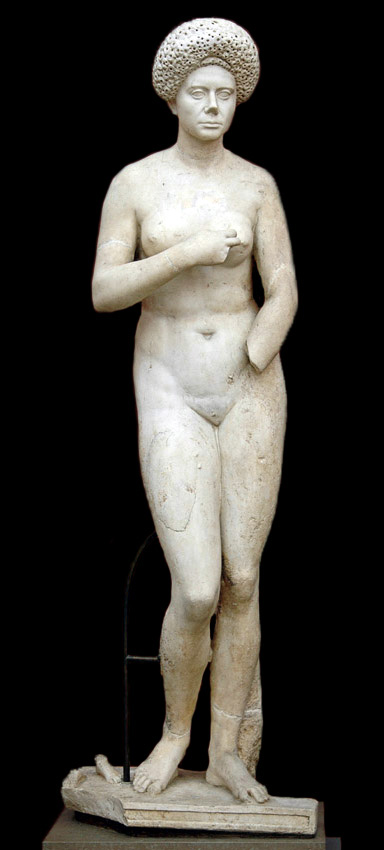
Portrait of Marcia Furnilla from a villa near Lake Albano, 79-
81 CE